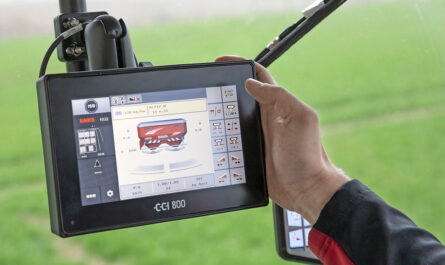What is Quantum Key Distribution?
Quantum key distribution (QKD) is a method for secure communication that uses quantum mechanics to encrypt and decrypt messages. It allows two parties to produce a shared random secret key known only to them, which can then be used to encrypt and decrypt messages. This key must be kept private, as possession of the key by an unauthorized party compromises the security of the encryption.
How Does QKD Work?
In Quantum Key Distribution, individual quantum states are transmitted from one party, commonly known as Alice, to the other, known as Bob. These quantum states, such as polarization of photons or energy levels of atoms, form the basic units used to produce the secret key. Due to properties of quantum mechanics like the Heisenberg uncertainty principle and quantum entanglement, any attempt to eavesdrop on the quantum channel used to transmit these states necessarily introduces disturbances that can be detected.
Alice and Bob monitor for these disturbances to detect the presence of an eavesdropper, commonly known as Eve. Once the key transmission is complete, they perform error correction and privacy amplification procedures to distill a secret key that is secure from eavesdropping. They can then use this key to encrypt and decrypt regular communication over a public channel.
Advantages of QKD
The main advantage of QKD is that it is provably secure. Unlike classical cryptography which relies on computational assumptions for its security, QKD is secure based on the laws of quantum mechanics. Any eavesdropping by Eve necessarily results in a detectable change or disturbance of the quantum states being transmitted from Alice to Bob.
This means that in principle, QKD is secure against any attacks, even from a quantum computer. As quantum computing progresses, conventional encryption algorithms like RSA could potentially be broken. But the security of QKD is based on fundamental aspects of nature rather than computational assumptions.
Another advantage is that Quantum Key Distribution allows secure communication even if the inner workings of the devices are totally public. The security stems from properties of the quantum systems being exchanged rather than complexity assumptions about the devices. In contrast, classical cryptography relies on the secrecy of cryptographic algorithms and keys.
Potential Applications
QKD has many promising applications where secure communication is essential. It could help protect data in banking and financial transactions, national security communications, voting and polling systems, and health records. As classical encryption algorithms become weaker with advances in computing, QKD provides a way to securely distribute secret keys for long-term security.
Some businesses have already started adopting QKD. For example, a Swiss bank used a QKD system developed by id Quantique to encrypt some ATM transactions. And in China, QKD has been used as part of a secure video conference system between government buildings in Beijing and Xinjiang provinces.
As QKD networks are built out, it could help enable truly secure communication on both private and public networks. Entangled-photon QKD, which does not require a line of sight, shows promise for scalable QKD networks integrated into existing fiber infrastructure. This may help realize global, quantum-secure communication in the not-too-distant future.
Challenges for Practical QKD
While the potential advantages of QKD are huge, there remain challenges for widespread practical applications. Current QKD systems, even point-to-point links, face distance limitations due to channel losses over optical fiber. Photons either don’t reach the other end or become too weak to use for encryption. This restricts QKD to ranges of a few hundred kilometers at best with current technology.
Other challenges include developing stable, affordable, and user-friendly QKD hardware for telecom networks. Meeting strict performance and jitter requirements for high bit rate secret key generation is also difficult. And building technologies for multicasting QKD keys securely over large-scale interlinked quantum networks has yet to be fully solved. Handling key distribution, authentication, and integration with existing IT infrastructure introduces complexity as well.
Despite significant advances, fully functional QKD networks with all the features we expect from modern communication systems have yet to be realized. Continued research aims to address these limitations through approaches like quantum repeater networks, integrated quantum photonic devices, and improved security protocols. Widespread adoption will require scaling up current point-to-point links into distributed quantum networks.
While challenges remain, quantum key distribution promises a future of unconditionally secure communication based on the laws of quantum mechanics rather than computational assumptions. Important early applications are emerging, and further scientific progress continues to expand the horizons of this technology. Quantum cryptography holds immense potential to protect privacy and sensitive data for decades to come, even in the face of ever-advancing computational power and code-cracking capabilities. It represents an important milestone on the road towards a quantum internet.
*Note:
1. Source: Coherent Market Insights, Public sources, Desk research
2. We have leveraged AI tools to mine information and compile it




